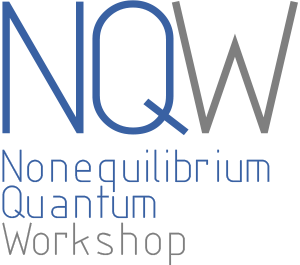
- This event has passed.
Optical signatures of photoinduced phase transitions in IrTe2
December 13, 2021 @ 20:40 - 20:55 CET
G. Jecl,1,2* V. Nasretdinova,3 Y. Gerasimenko,1,† T. Mertelj,1,2 C. Monney,4 F. von Rohr,5 D. Mihailović1,2,3
1Department of Complex Matter, Jožef Stefan Institute, Ljubljana, SI-1000, Slovenia
2Faculty of Mathematics and Physics, University of Ljubljana, Ljubljana, SI-1000, Slovenia
3CENN Nanocenter, Ljubljana, SI-1000, Slovenia
4Département de Physique and Fribourg Center for Nanomaterials, Université de Fribourg, Fribourg, CH-1700, Switzerland
5Department of Chemistry, University of Zürich, Zürich, CH-8057, Switzerland
IrTe2, a Van-der-Waals transition metal dichalcogenide, is known to host a complicated phase diagram: two first order phase transitions into charge ordered stripe phases of different periodicity are observed in bulk undoped samples [1]; superconductivity emerges in bulk doped samples resulting in the familiar superconducting dome behavior [1]; superconductor – normal metal switching was demonstrated in un-doped quenched nanoflakes [2]; and superconductivity has been shown to emerge in thin flakes resulting in a superconducting dome as a function of flake thickness [3]. Most interestingly however, fast cooling of undoped bulk samples has resulted in the formation of superconducting hexagonal-like surface patches appearing at three-fold stripe phase intersections [4].
We have studied the possibility to control the low temperature charge order in IrTe2 with ultrafast pulses using optical time domain spectroscopy. High fluence photoexcitation gives rise to non-thermal behavior of transient reflectivity on sub-picosecond timescales, indicative of a transient photoinduced phase transition thought to be associated with Ir dimer breaking and recovery [5]. Following the trajectory of the system in double-pump measurements we observe definite evidence of a transition to a mixture of higher temperature equilibrium phases several picoseconds after the arrival of the strongly perturbing pulse, as well as the material’s subsequent relaxation into the low temperature equilibrium state some 100 to 150 picoseconds after excitation. We conclude that the phase transitions at these timescales are driven by the increase in the transient lattice temperature imposed by laser excitation.
On the other hand, by tracking the response to increasing intensity of the pump beam at a fixed delay in the double-pump experiment we observe threshold-like behavior in the temporal as well as in the spectral domain, thus shedding light on the connection between the dimer breaking transition at sub-picosecond timescales and the transient lattice temperature driven transitions at longer timescales.
- S. Pyon et.al., Journal of the Physical Society of Japan, 81, 053701 (2012)
- H. Oike at. al., Science Advances 4, eaau3489, 2018
- S. Park et.al., Nature Communications 12, 3157, 2021
- H. S. Kim et.al., Nano Letters, 16, 4620-4265, 2016
- S.-I. Ideta et. al., Science Advances 4, eaar3867, 2018
†Present affiliation: Faculty of Physics, Universität Regensburg, 93040 Regensburg, Germany


